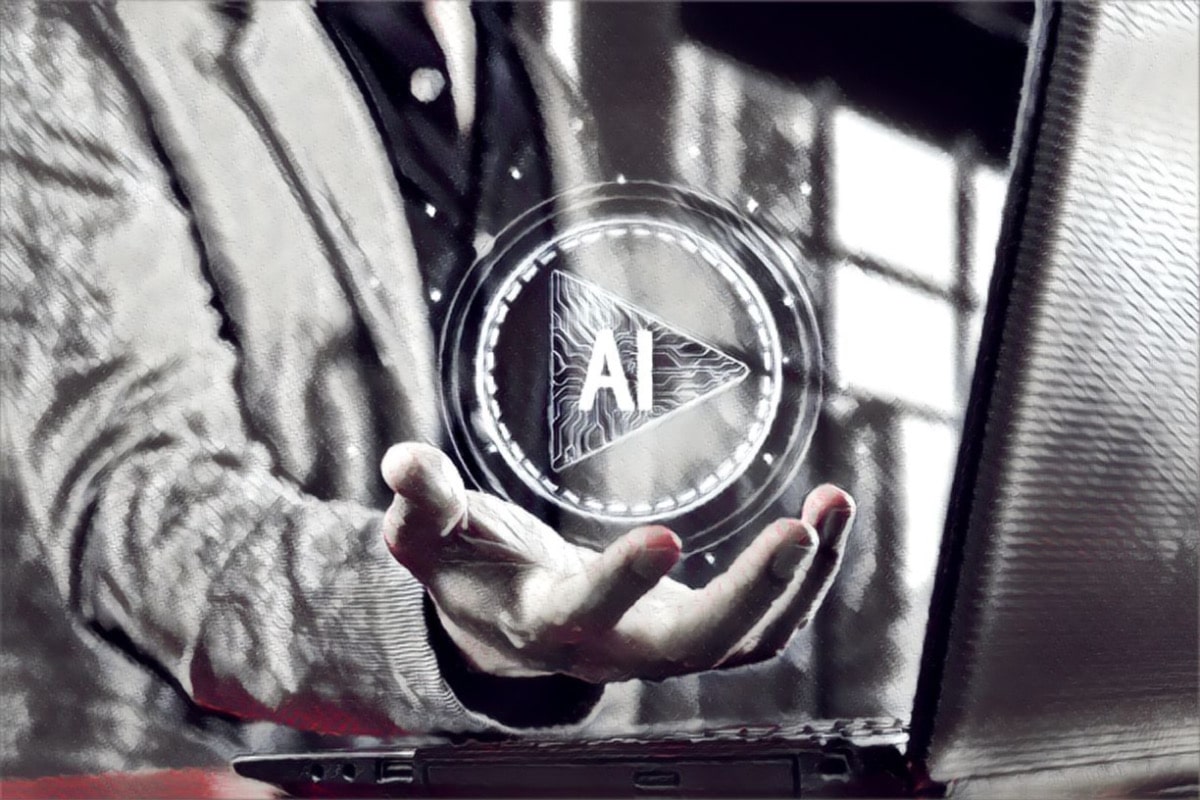Paid search, paid social, search engine optimization, and affiliate marketing.
For the past 15 years, these four marketing tactics paired with sales outreach to dominate customer acquisition.
How?
They focused on making their target customer’s internet experience as convenient as possible.
Each tactic drove results by integrating relevant, high-quality information or experiences with everyday Internet use. In the case of search engine optimization, this meant creating educational content for their customer base.
For pay-per-click advertising (paid search + paid social), this meant running targeted advertising on platforms that housed educational content or entertainment experiences for customers.
Businesses picked from the list, depending on their product, target customer, capital, and short vs. long-term growth goals.
As businesses scaled or took on larger funding rounds, they expanded to event and newsletter sponsorships, billboards, podcast commercials, and more.
However, the original four dominated customer growth for all but the largest businesses in the world.
In the past two years, we’ve seen a surge in attention shifting to artificial intelligence.
ChatGPT launched in November 2022. AI-first search engine, Perplexity, launched in 2022. On May 14th, Google launched AI Overviews (formerly known as Search Generative Experience) in search results.
Each promises to give users immediate, abridged answers to their questions, without requiring them to read a separate blog article.
How Will Each of These Channels Be Impacted?
Let’s see how a sample information request on Google will impact each marketing channel. Assume there’s a person looking for information to plan their next vacation.
Historically, this person would have gone to Google and searched for the following queries:
- “Best budget-friendly travel destination in Europe” -> They read four blog articles that recommend destinations to consider.
- “Pros and cons of Prague vs. Budapest” -> They read two blog articles and decide Prague is the right destination for them.
- “How long should I stay in Prague on vacation” -> they read a blog article that recommends they spend 4 nights in Prague.
- “Things to do in Prague over long weekend” -> They read several blog articles to build a list of restaurants to visit and things to do during their stay.
We could go on, but let’s break down the revenue opportunities here:
- Searches 1-3 lead to the user reading educational blog articles. These articles hold ads that cover costs to run the blog and promote businesses interested in advertising to travelers. Those who click the ads are then retargeted with display ads on social media.
- Search #4 takes the user to an article by a travel company about top-rated things to do in Prague. The reader books a tour with this company. The reader also books their hotel through an affiliate link on the article. The travel company gets a commission for referring the reader to this hotel.
So how does that change in an AI era?
- Searches 1-2 still see clicks from serious travelers. However, AI Overviews in Google search provide an AI-generated answer. Let’s assume these are sufficient for 25% of searchers. 25% fewer people click on these educational articles -> 25% less ad inventory is available on these blogs to promote businesses interested in reaching these travelers.
- Search #3 generates an AI Overview in Google. The user only wanted a quick answer to their question. Let’s assume these are sufficient for 75% of searchers. 75% fewer people click on educational articles about this topic.
- Search #4 generates an AI Overview that pulls in the 10 recommended activities from the travel company and the recommended list of hotels. Let’s assume 25% of searchers Google the hotels and activities directly to land on their website, instead of using affiliate links from the travel company. The travel company still books the tour from those searchers, but no longer gets a commission for recommending that hotel to 25% of searchers.
In other words, we’ll see fewer clicks to sites that create information for readers. This will create the following chain reaction:
- Information sites will see fewer readers from search engines, as articles that traditionally drove thousands of visitors per month will lose traffic to AI Overviews that can provide sufficient information to satisfy a portion of searchers. The value of SEO will fall for sites that sell “information”, rather than a specific product/service.
- With fewer readers, information sites will have less ad inventory to sell to sites reliant on display advertising. These information sites will also refer fewer readers to buy products via affiliate links. Businesses reliant on display advertising and affiliate marketing for customer acquisition will now have to bid against the same number of competitors for a smaller supply of ad space. Ad costs will skyrocket and customer acquisition costs via display and affiliate marketing will rise with it.
- As costs to advertise in blogs rise, businesses will focus more on paid social and paid search ads. A similar effect will follow — higher demand for the same amount of ad space. Ad costs will skyrocket, and customer acquisition costs via social media and paid search ads will rise.
If 1,000 people buy travel backpacks from you and your competition online every day, you’ll still see 1,000 people buying backpacks every day in a year.
What will change is the online path that your customers take before making a purchase.
How to Succeed with Each Marketing Channel in the Future
Ok, so the value of SEO, PPC, and affiliate marketing is going to fall. Are they still worth doing?
Yes.
However, we’re going to need to think about these customer acquisition channels differently.
How to Succeed with SEO in an AI Era
Back in 2021, we published the original draft of The 5 Components of a Successful Content Strategy.
The premise?
Every type of content you create should fall into one of five buckets:
- Awareness Content
- Thought Leadership Content
- Sales Centric Content
- Culture Content
- Pillar Content
This article rings more true today than ever.
The integration of AI with search results means a few things for SEO
1. The lion’s share of organic traffic will go to the top three results featured in AI snapshots in Google search results.
As of the end of 2023, 51.6% of clicks on search engine results pages go to the top three listings. This percentage will only become more concentrated as AI Overviews become more common in search results.
Many AI Overviews generate a list of supplemental resources to learn more. Whether supplemental resources or traditional blue links, the top 3 organic results will dominate search engine clicks.
2. Those who rank in the top three results on Google will build a moat over their competitors.
More attention being allocated to these top listings will make it harder and harder to overtake those who rank at the top of Google.
3. Integrating SEO and brand positioning will become increasingly important.
Today’s AI technology is built on large language models (LLMs) that sift through hundreds of billions of words spread across billions of documents.
We’ll see the emergence of a new SEO trend that focuses on spreading a company’s narrow positioning to as many webpages as possible to reinforce that positioning to AI tools.
Clear positioning has long been a focus of SEO. It’s one of the three SEO principles that our team focuses on (see our SEO Principle of Relevancy). However, SEO positioning has long consisted of SEO teams pushing for the broadest search targets that:
- The branding team will sign off on as being accurate descriptors of the business, and
- Are feasible for the business to rank in search engines for.
If we could rank a business for the search theme “luxury travel agency”, there was no SEO rationale to position the business as a “luxury travel agency specializing in all-inclusive resort stays in Southeast Asia”. The first would get more traffic and more leads. The business might prefer booking luxury resorts in Southeast Asia, but they’d be happy with all luxury trips.
4. SEO will evolve to reward nuance.
The winners will be those who write content that readers seek out, and then inject their unique perspective.
Today’s AI is great at sifting through information and regurgitating it in different words or synthesizing key takeaways from that information. However, today’s AI technology fails to generate new ideas.
“Synthesizing” is the key word here.
ChatGPT 3.5 was trained on 300 billion words of written content from across the internet (the equivalent of twelve million 100-page books). We can assume that ChatGPT has been trained on tens, if not thousands, of fairytale stories in its training set.
AI is using pattern recognition to identify key themes of a fairytale based on its training set.
Is it impressive? Definitely.
Is it creating a truly new idea? No.
AI has a long way to go before it can come close to matching the writing quality of a half-decent human writer. However, assume it will only get better.
A content strategy built on keyword research is still a great starting point for SEO. However, take it a step further. If you’ve spent a decade on your craft, you likely have strong opinions on best practices in your space.
He could work with an AI tool or hire a writer to ghostwrite each recipe for him. However, without his involvement, that blog would be like every other food blog on the Internet.
He’s going to win in search results by hiring a writer to do the heavy lifting — hiring a writer who can take the bullet points he jots down and convert them into an article that is 80% complete.
From there, he’ll add in the finishing touches. He’ll rant about how to properly heat your cast-iron skillet, the impact of seasoning your steak for an hour vs. six hours, and more.
His expertise and personality, which fans love, will shine through in every article in a way that another blog (or AI tool) never could.
He’s going to build the #1 recipe blog because he’ll add the last 20% that makes each recipe 10x better than every other recipe blog.
Be the Gordon Ramsay of your content.
If you can’t personally make time to create content for your site, hire writers or an agency like ours to do the heavy lifting and then inject your feedback and expertise into the outline and first draft of each piece of content your company publishes.
An aside about AI risks in SEO
For those leaning towards using AI to do the heavy lifting in content creation, please read about the legal, ethical, and overall brand reputation risks of using AI for content creation first.
The integration of AI with search results means a few things for advertising
If your business’ lifeblood is acquiring customers through paid search, paid social, and/or affiliate marketing, expect margins to be squeezed.
If Google’s AI Overviews take away 25% of clicks from search results, sites that rely on Google as their main traffic source will see less monthly traffic.
Whether you’re advertising on popular industry websites, social media platforms, or directly on Google via Google Ads, expect two forces to work against you:
- If there are fewer clicks available, your competitors will pay more for each click.
- If advertising platforms serve up fewer ads, they will increase the price of each click/impression to cover costs.
Start to diversify your customer acquisition stream today.
If you’re spending $50k/month on PPC, funnel 5-10% of that to other customer acquisition tools like SEO. Invest in building your credibility with an audience that seeks out your content.
How to Thrive with Online Marketing Moving Forward
Succeeding in this new era of online marketing will consist of building a strategy upon the following pillars:
1. Exceptional Educational Content
How do you win in a sea of AI summaries? By injecting nuance.
InLinks wrote a phenomenal resource about Google’s patent that was approved in 2022. This patent focused on using “Information Gain Score” to enhance search results.
The name of the game in this AI content era will be information gain.
Keyword research and research-driven content will still play a role in SEO and content marketing. However, a brand’s ability to incorporate the expertise of its team members into its content will separate the winners from the losers.
Here’s how we’re approaching this with our clients:
- We still ghostwrite articles for our clients about the research-intensive topics their customers search for online. These are what drive traffic to sites today. However, we include clients in the outline and first draft review to inject their feedback and perspective whenever possible.
- We interview clients about industry trends, common challenges, and more. We convert these interviews into long-form articles that consolidate their thoughts and showcase their expertise to their audience.
How does this work in practice?
Research-intensive articles (that we refer to as Awareness Content) bring readers in through search engines.
We then push readers to the client interviews (that we refer to as Thought Leadership Content) to show readers that the client is a brand worth following to stay informed on the industry and a reputable brand to buy from.
Our team’s bread and butter is creating content in written form, such as blog articles. However, this same approach can be applied to other content mediums like videos and podcasts.
2. Storytelling and Community Engagement
Focus on building a fanbase of people rooting for you to succeed.
Post videos or written content on social media about big wins for your business, roadblocks you’ve encountered, and challenging problems you’ve solved to help others dealing with the same issues.
Greg Rollett and I spoke about this much more in depth on Intergrowth’s podcast, Customer Growth Sessions.
Building an emotional connection with your followers will give you an unfair advantage over your competitors that outsource their brand voice to AI.
Take this a step further by participating in community discussions that your audience is engaged in. Join Slack communities, Facebook groups, and subreddits.
Share your insights with community members. Engage in these communities to become the helpful resource that potential customers turn to when they need information about your area of expertise.
3. Clearly Positioning Your Brand
Clear brand positioning will be essential in this AI era.
Paint a clear picture of your brand’s narrow positioning for AI models.
Now is the time to decide what makes your brand unique. Read Jim Collins’ hedgehog concept (and the full Good to Great book if you haven’t already) and start working on narrowing your focus.
Once you’ve defined your positioning, showcase it everywhere you can:
- Spread it across your website
- Update your social media profiles to reflect this positioning
- Write blog content describing your positioning
- Discuss your brand’s positioning on podcasts
Give as many data points as possible to AI models that clarify what your brand does. This will ensure your ability to win customers through AI-powered searches on ChatGPT, Perplexity, Google’s AI Overviews, and future AI technologies.
We’re operating in an exciting time.
A lot is going to change in the next few years. Many of your competitors won’t adapt.
Give yourself a leg up on the competition and get started preparing for the AI era today.
Looking for guidance? We help grow brands in two ways:
- Growth Catalyst: we lead the strategy and implementation to turn you into the market leader.
- Growth Advisor: we consult with your existing team of SEOs and content marketers to prepare for the changing landscape. We work with you to formalize your marketing processes, assess SEO opportunities, and train your team to level up your SEO results.
Contact us today to schedule an SEO consultation to learn how we can help you prepare for the AI era.
SCALE YOUR ORGANIC TRAFFIC
Subscribe to our monthly newsletter



